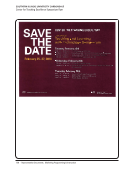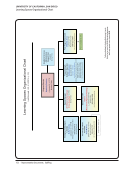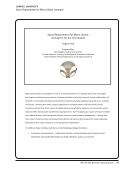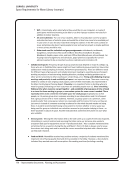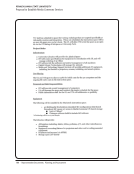SPEC Kit 342: Next-Gen Learning Spaces · 29
Lab with multimedia software to enable access to computers and software that would allow for students to create the
types of papers and presentations that are being required by their classes.
EFFECT OF LEARNING SPACES ON LIBRARY SERVICES
5. Has the development of learning spaces had a direct effect on the services your library provides?
N=72
Yes 70 97%
No 2 3%
If yes, please indicate the type of service change(s) that have resulted from the development of
learning spaces. Check all that apply. N=70
Added new services 60 86%
Reorganized services 55 79%
Combined existing services 47 67%
Eliminated services 20 29%
Other service change 10 14%
Please briefly describe the other service change(s). N=10
Central University Information Technology Services provided additional computers in a 2nd floor library quiet area from
another less used computer lab on campus. These computers are maintained by Libraries technical staff.
Citation management consultation by appointment (change from drop-in or scheduled workshops). Introduction of
Design Help service. Integration of librarians into writing center for research and writing consultations.
Creation of a Digital Literacy program from the Student Multimedia Design Center
Digital Media Lab: Building a flexible learning environment has created opportunities and requests to host technology-
enhanced events and conferences such as student-driven hackathons, 72-hour film workshops, teaching fairs, etc. Fine
Arts: re-purposed classroom space for digital services eliminated the analog slide service eliminated the need for a
traditional classroom by taking teaching and instruction into the academic class space added video art to the library
as a studio art learning space in an unused former niche of the reference room eliminated much of our traditional
reference services in favour of a multiuse teaching, learning, and study space. Scholars’ Lab (SLab): elimination of
software distribution and support (now handled online) provided space to increase access across all disciplines to
technologies (like 3D modeling) that could spark new research questions.
Expanded existing services.
Streamlined/combined multiple service desks. Developed speaker “salons.” Began lending VGA cables.
The School of Education and College of Engineering have combined support units administratively so that the libraries
work together with media support and technology support. The services provided are therefore not as discreetly defined
as “library” services.
Lab with multimedia software to enable access to computers and software that would allow for students to create the
types of papers and presentations that are being required by their classes.
EFFECT OF LEARNING SPACES ON LIBRARY SERVICES
5. Has the development of learning spaces had a direct effect on the services your library provides?
N=72
Yes 70 97%
No 2 3%
If yes, please indicate the type of service change(s) that have resulted from the development of
learning spaces. Check all that apply. N=70
Added new services 60 86%
Reorganized services 55 79%
Combined existing services 47 67%
Eliminated services 20 29%
Other service change 10 14%
Please briefly describe the other service change(s). N=10
Central University Information Technology Services provided additional computers in a 2nd floor library quiet area from
another less used computer lab on campus. These computers are maintained by Libraries technical staff.
Citation management consultation by appointment (change from drop-in or scheduled workshops). Introduction of
Design Help service. Integration of librarians into writing center for research and writing consultations.
Creation of a Digital Literacy program from the Student Multimedia Design Center
Digital Media Lab: Building a flexible learning environment has created opportunities and requests to host technology-
enhanced events and conferences such as student-driven hackathons, 72-hour film workshops, teaching fairs, etc. Fine
Arts: re-purposed classroom space for digital services eliminated the analog slide service eliminated the need for a
traditional classroom by taking teaching and instruction into the academic class space added video art to the library
as a studio art learning space in an unused former niche of the reference room eliminated much of our traditional
reference services in favour of a multiuse teaching, learning, and study space. Scholars’ Lab (SLab): elimination of
software distribution and support (now handled online) provided space to increase access across all disciplines to
technologies (like 3D modeling) that could spark new research questions.
Expanded existing services.
Streamlined/combined multiple service desks. Developed speaker “salons.” Began lending VGA cables.
The School of Education and College of Engineering have combined support units administratively so that the libraries
work together with media support and technology support. The services provided are therefore not as discreetly defined
as “library” services.










































































































































